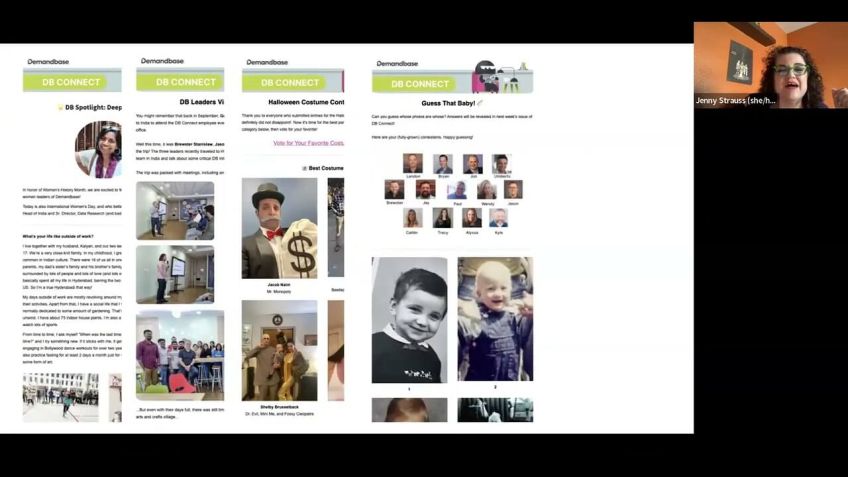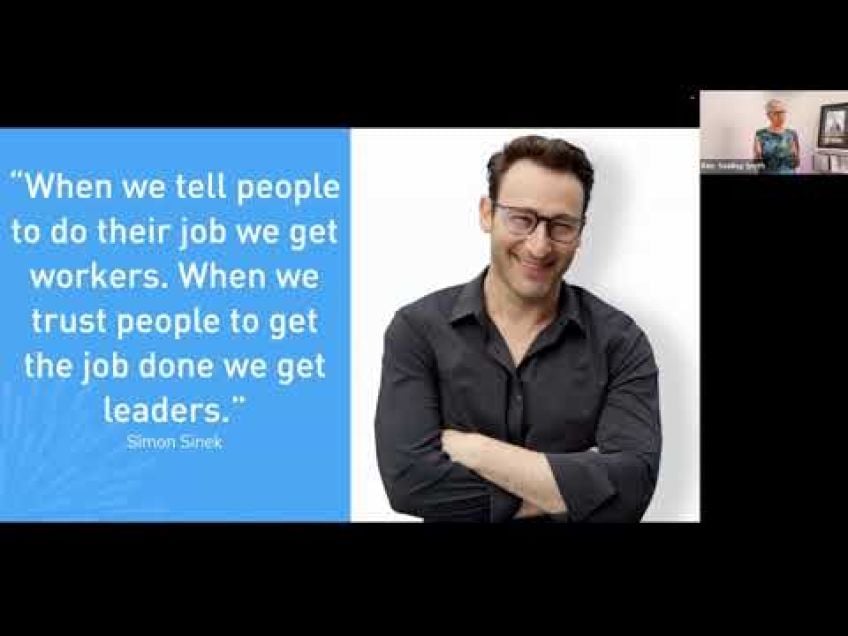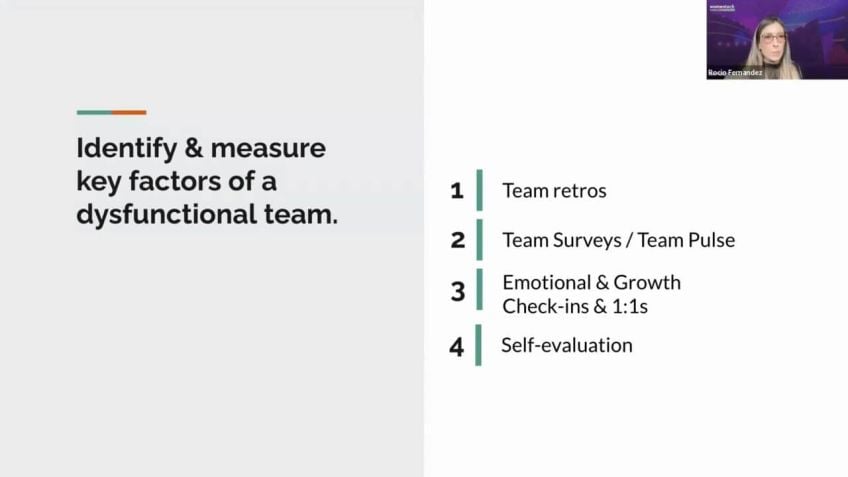Retaining and Engaging Teams in Changing Times
Nikki Evans
Chief Thought ProvokerRetaining and Engaging Teams in Challenging Times
Hello, I'm Nikki Evans, the owner of Ridgeline coaching. In these challenging times, a significant topic that needs addressing is retaining and engaging teams. Understanding why people disengage and ultimately leave an organization is critical to stop the churn and improve engagement.
Understanding Employee Disengagement
Based on a study published by Gallup in January, as many as 68% of employees are in some stage of disengagement, 18% of whom are in an active state of disengagement. In simpler terms, they are either encouraging others to disengage or making sure they themselves are not engaged.
Key Components of Employee Engagement
When employees are engaged, they have:
- Clarity of expectations
- A connection to meaning and purpose
- Opportunities to learn and grow
- A sense of appreciation at work
- Support and encouragement for their interests
- A feeling that their opinions count
If these key elements are lacking, it causes people to disengage. Areas that breed disengagement include being in the wrong role, being asked to do work that’s not a good fit, and not feeling appreciated or seen.
Root Cause of Disengagement
Identifying the root cause of disengagement is an essential step towards improvement. The Complex Adaptive Systems Framework gives us useful insights into this process.
Purpose and Motivation
At its core, the purpose refers to what the team is there to do, what their mission is, and what motivates them to work. The team purpose might be a subset of the organizational purpose or one defined particularly for the team. The purpose shapes collective synergy, forming a whole that is indeed greater than the sum of its parts.
Is Purpose and Motivation the Starting Point?
Although purpose and motivation can be pivotal, they may not necessarily be the starting point for your team. Alternatively, you may need to revisit areas such as processes and systems, internal and external stakeholders, relationships, learning, and leadership.
Psychological Safety
In all these considerations, a fundamental prerequisite is the sense of psychological safety within the team. Creating a safe and comfortable workspace allows people to ask questions, make mistakes, share knowledge, and help each other. Using behavioral tools to understand team dynamics can be a good starting point in creating a psychologically safe environment.
Conclusion
Teams with a strong sense of purpose and connection are the ones where people want to work. Making your team a psychologically safe place to work can be a significant first step towards improving engagement and retention. Remember, it's not just about retaining talent but about engaging them in a manner that makes them want to stay and contribute their best.
Would love to continue this conversation on LinkedIn. Don’t forget to check out the psychological safety assessment gift attached. The insights you get from it could be incredibly helpful. Thanks for being on this journey to better team engagement and retention with me. Feel free to ask any questions or share your thoughts.
Video Transcription
Hello. Hello and welcome. I'm Nikki Evans, owner of Ridgeline coaching. And today we'll be talking about retaining and engaging uh teams in challenging times and changing. Um This is a huge topic.So I'm gonna give you just a little bit of what we're gonna cover today and just know that it's a, it's a big topic. I've got 20 minutes. So what we're gonna cover today are some key reasons why people disengage. So if we want to keep people motivated and engaged and retained, we need to know why do they disengage um after they disengage, they tend to leave. So if we want to retain people and keep them engaged, why are they just, what, what are the um some of the stats on disengaged employees, what are some of the key reasons that people disengage and then a framework for actually finding the root cause of some of this disengagement.
So I will start with some statistics here on employee engagement. And this came from a study that was published this year in January by Gallup and what they found what were 68% of employees are in some stage of disengagement and about 18% of those are in an active state of disengagement, meaning that they are either encouraging others to be disengaged.
They are um making sure that they are, they are not um not staying engaged, not working with others. So it's, it's a big problem. And as you have people that are actively disengaged, that can be um a really difficult place to be. And even if you don't have a lot of actively disengaged people, almost one in seven are in some stage of disengagement. So it's, it's a big problem. So it's a good place to be for us to be talking about some things that we can do to try to address this. So what are some key components of actually being engaged? Um So if we want to talk about now, we know that there's, there's a lot of people that are disengaged. So what does actually engagement look like so that we can tell what disengagement looks like? So when people are engaged, they have clarity of expectations. They are connected to meaning and purpose. They know that they have opportunities to learn and to grow, they feel cared about at work. They have someone that encourages them to learn more or to develop their interests and they feel like their opinions count. So if that's what engagement looks like, if being able to show up and be seen at work, feels like engagement to me knowing what it is that I'm supposed to be doing there and how to do it.
And having people encourage me to do better are gonna keep me engaged at work. Then the absence of these key elements is causing people to disengage. So being in the wrong role, being asked to do work, that is not a good fit for me, not feeling like I'm being appreciated, not feeling like I can bring my whole self or not feeling like I'm seen and heard and my opinion matters and having a lack of clarity on how is this work that I'm doing with this huge amount of time that I'm spending with you in your organization.
How is that actually contributing to a larger, bigger picture? So we want to retain more people, we want to get them more engaged. So what we're gonna talk about next is now that we know that we have a lot of disengaged people, which is probably why you were here and then we want to actually contribute to getting people more engaged once you understand. So here are some of the things that get people more engaged, having clarity of expectations, being able to tie to meaning and purpose, having opportunities to learn and grow, having good relationships with other people that they're working with are really important for that engagement.
How do we go about figuring out what's the root cause of some of this disengagement? So some of these things are symptoms of, of key components of being engaged. But what causes people? What's the root cause? Where if you were gonna go look in your organization to try to fix engagement, where would you go? So the complex adaptive systems framework is a framework for looking at complex systems like teams and figuring out where to focus your energy to try to fix a problem that you see in that environment. So the components of this system, this framework, our purpose. So purpose and motivation, what is it that our team is here to do external and systems processes and stakeholders is a part of that system relationships. How do people function and relate to one another on the team, internal systems and processes and stakeholders. What is our relationship with folks that we work with outside of our team but still inside of our organization? How do we learn as an organization? How do we learn as a team? And then what is our leadership style? How, what is the path to leadership? What are examples of leadership that we have? How are we building leadership for all of us on the organization? So this framework really helps us determine and build healthy and productive teams and dives into where people can improve to add value in their organizations.
So in each of these areas, you can kind of pinpoint and articulate, find a root cause of places where people might lack clarity where people might not feel heard relationships that are in trouble processes that aren't working um to help drive uh more engagement, more retention with your team.
So, because this is a short session today, I'm only gonna have time to dive into one of these steps in this framework. They're all super useful. And we'll see now we'll dive into purpose. So purpose is about what the team is there to do. It is their mission and their why the team purpose may be a subset of the organizational purpose or it may be one generated just for that team as something that can get a kind of a rally cry and get people excited about the team. So from the purpose flows, the collective energy that makes the whole greater than the sum of the parts. So indicators of clarity of shared vision and goals and priorities, um when you, when you have those things on the team, that indicates that you have a clear purpose and motivation around that purpose. So if we can get more of that, that's kind of what we're looking for. So one way um to think about this is with Simon Sink's book, start with why? So he has a framework for thinking about typically in organizations, we we talk about what we do and then maybe we talk about how we do it or how we differentiate but seldom do we talk about why we do it.
And it is that why that is not add stakeholder value, but it is that why that motivates people that brings them their purpose. Um, and that contributes to that sense of something bigger. And so he started, um, he used Apple computers as an example of their starting with A Y um, and if they had started with their, what their marketing messages might sound something like we make great computers. They are beautifully designed and simple to use. Do you want one?
Right. And that's kind of how typical marketing messages go from that. What, what is it that we do? We make computers, how do we do it? We make them user friendly, do you know? And then we skip the why part? And we just go for the sale. But if instead they start with everything we do, we believe in challenging the status quo. We believe in thinking differently. The way we challenge status quo is by making products beautifully designed, simple to use and we happen to make computers. Um, and that's part of why we're willing to buy music, um, systems and watches and phones from a computer company where we pro it probably wouldn't occur to us to try to buy a phone from Dell Computers or a watch from Dell computer. We have no problem making that leap because we know that the, the watch and the phone is part of that, why Apple is around to get us to think differently about how we use technology, how we interact with technology. So having something that's a compelling reason thinking differently.
Um inspiring people to think differently. Um Creating beautiful design are things that, that you can do that. It is an example of purpose. So should you start with motivation and purpose? So I'm covering purpose and motivation today because it's often a foundational element that when it's missing or clearly um unclearly defined, it causes people to become demotivated and disinterested in work. And that lack of feeling, a sense of purpose around work can lead to quiet quitting, which has been in the news a lot where people just won't go the extra mile, just don't put in the extra effort, don't ask the extra questions. And since we're here to talk about retaining talent during change, this seems like a logical place to start. Does everybody understand what your purpose is now? Depending on how well you've defined your mission and purpose? Maybe this isn't the place that you need to start with your team, but you can look someplace else in that framework for a place to start. And in my next slide, I'm gonna talk about a place that anybody can start. Um But you really wanna think about, do you have symptoms of low motivation? Um which are things like people not taking answers? Do, do people debate ideas or do they go with the first answer that they heard? Are people asking questions?
Um When people don't ask questions, it's it's a uh indication that um either they don't feel safe to ask questions or they don't care that much. And so they're just gonna do exactly what they're told as they understand it. Um If you ask your team questions and they have really unclear answers to those questions, um that can be a symptom of low motivation on your team. And there's also confusion and doubt. So, are people often second guessing themselves? Are they doubting, are people waiting for more information to come before they take action on things? Do do people feel empowered to take action or do they kind of wait until they're told? So, as you think about your organization, are people taking action? Are there things that um indicate that people understand your purpose? Really? Well? Do people really understand um what it is that you think your team is aligned to do? If you asked your whole team, what is our purpose as a team? Would they share common answers? Would they all have the same answer? Is there some compelling reason other than uh earning a paycheck that drives people to want to work in your organization? So in some cases, we can say, should, should we start with purpose and motivation? Is that really the place that we need to start? So again, as you're thinking about um where, where you are in this journey? Um These are, these are places that you wanna think about again. Maybe your team doesn't need to start with purpose and motivation.
Maybe your team has some other place that you can start digging around for. Where are we losing people? Is it with our processes and systems with external vendors? Is it with our internal systems and processes? So there's a lot of places that you, that you could potentially start, maybe you do have a really good purpose and, and maybe your motivation is high. I would also say in changing times, you need to think about if you've lost people to layoffs or retirements. Um If, if you are struggling to retain people on your team or if the environment around you has changed, do you need to revisit purpose and motivation? Do you need to revisit priorities? Perhaps your, you know, mission is to um make beautifully designed things, make people think differently and now that thinking differently has been interrupted by A I. Do you need to Reprioritize so that may still be your mission? But do you need to change the priorities that you're working on? Do you need to help people see that our underlying mission and purpose is still the same? But to meet the challenges of supply chain or to meet the details of the day or to address, you know, security concerns, we need to shift our priority.
And then how does that purpose and mission still apply to the new priorities that we have if you've gotten lots of new people into the organization because you've been dealing with turnover. Are you helping the new team members know what purpose and mission and vision mean to you.
Are you helping get them on board with those things? So those are some things that you can start to think about. If you think that purpose and motivation where people are not taking action, people are not asking questions or they have unclear answers, there seems to be a lot of doubt that may be a time for you to step back and evaluate your, your purpose, your mission, your values and think about it, having those conversations with your team to know, is this the kind of environment that is this a place where we need to work on to really solidify and tie what our team is trying to do to a larger mission so that people have kind of a North Star or a touch point or a rally cry.
We worked with a team recently who had gotten some new directive. Mostly they were a really high functioning team that was doing well. They got some new leadership, they had slightly different direction. And so to really think about their purpose and, and mission again in a new way and put together a team rally cry that helped them make good decisions based on what that kind of new North Star was. So does your team have a North Star that they can use that if they know the goal is to think differently that that can help inform the decisions that they're making as they're building new applications or as they're building new features. Um So that's a, that's a way that you can incorporate knowing purpose and motivation. But I would say that even to start talking about motivation and purpose or to start addressing relationships or learning or internal or external stakeholders and systems and processes and certainly leadership, you need to know if your team is a psychologically safe place. And so what I mean by that it's a big term. But what I mean by that is, do people feel comfortable asking questions? Is it OK to make a mistake in this environment? Are we sharing learnings with one another? Do we, do we help each other?
Um So if people don't feel psychologically safe, like most of us don't feel physically threatened by coworkers, but sometimes we feel like we might be made to look stupid or we might be held back getting a promotion or we might not get a fun assignment that we want if, if we say a certain thing or do a certain thing or don't do a certain thing or behave a certain way around a certain person that's psychological safety.
So making sure that you have a psychologically safe team is a great place to start. Do they feel OK to ask questions? Is it a safe place to share ideas? And if it's not, then starting with a behavioral tool. So dis is one of these, I work with one called natural behavior. That's really easy language to use is both very personal because it describes who you are as an individual. But then it puts all of us on that same playing field. So that while it's, it's very personal and helps you see who I am as a person, it also helps all of us to develop a common language around those behaviors that we start to see from one another. And so my need to make decisions and in my lack of planning are part of how my brain is wired. And so how can I now work with somebody else in a different way to understand the strength that I have and where they may be weaknesses in the role that I have. When you can start to build this behavioral language. It's a place to step into deeper conversations around behavior and around things that build that psychological safety without being so vulnerable.
And also if you can get your team involved in contributing to and agreeing about the mission and vision and their values and think about how that ties into the rest of the organization aligning personal values with team values with organizational values are ways that you can start to step into um creating, figuring out like what's that root cause of why are people disconnected?
What do we need to do to get them re engaged and then to bring other people in when teams have a strong sense of purpose and connection when they're a psychologically safe place to work. Those are teams that people wanna work on. Those are places where people maintain that um want to work on that team. So I only have a couple of minutes left. I would love to connect with you on linkedin. So we're gonna put in the chat there. Um My linkedin information, I share tips on Tuesdays and um if it would be great, if you would um connect with me and let me know that you saw me here when you connect with me, there's like an extra step that you have to do. There's a follow me step, which is pretty easy, but there's, if you hit the ellipses, you get an extra button that says connect. And so if you connect with me and just say that you saw me here, that would be fantastic. I would love to know that you saw me and I'm happy to answer other questions there. And then also I have a gift for you. So thank you so much for joining me today. And my gift to you is a psychological safety assessment. So if you don't know if your team feels psychologically safe or you don't know if you feel psychologically safe on your team, you can take this quick assessment.
It will give you some idea of what psychological safety is because of the questions that it asks and it will give you a sense of how safe do people feel on your teams? So that is my gift to you. And I really look forward to connecting with you on linkedin. And if there's, I probably have 40 seconds for a question. If someone's got a question and you want to drop it in chat or in the Q and A, I'm happy to answer questions, but it was a, it was a lot today, but my goal was to give you something useful. So if you could give me a thumbs up or a yes and chat, if you took something away from this, that was useful, that would be fantastic. Yeah. Thank you. Thank you.






